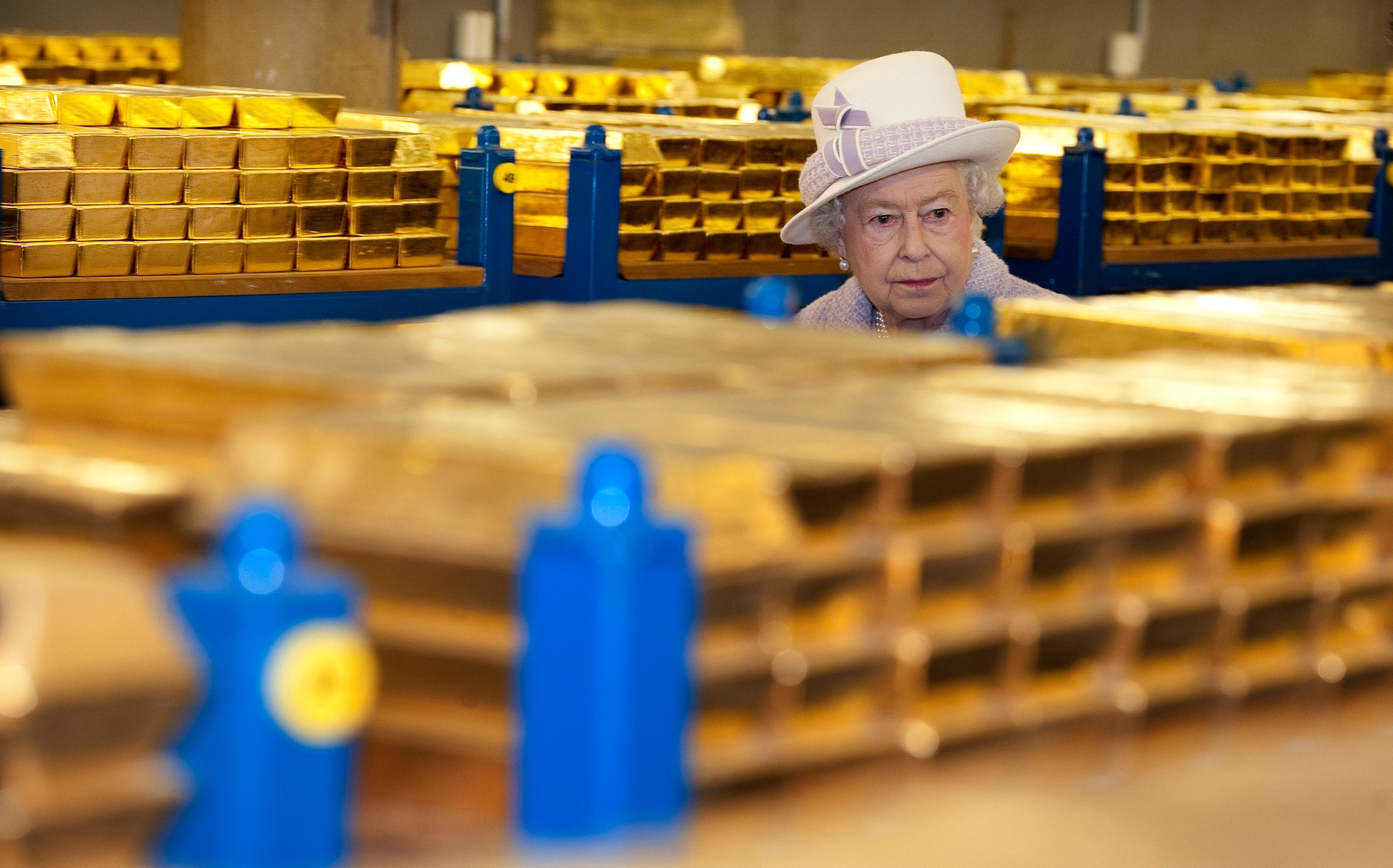Royal wealth of the Queen kept experts guessing
The Queen was thought to be worth more than £370 million.

Your support helps us to tell the story
From reproductive rights to climate change to Big Tech, The Independent is on the ground when the story is developing. Whether it's investigating the financials of Elon Musk's pro-Trump PAC or producing our latest documentary, 'The A Word', which shines a light on the American women fighting for reproductive rights, we know how important it is to parse out the facts from the messaging.
At such a critical moment in US history, we need reporters on the ground. Your donation allows us to keep sending journalists to speak to both sides of the story.
The Independent is trusted by Americans across the entire political spectrum. And unlike many other quality news outlets, we choose not to lock Americans out of our reporting and analysis with paywalls. We believe quality journalism should be available to everyone, paid for by those who can afford it.
Your support makes all the difference.The Queen was always considered to be one of the richest women in the world, but she kept her bank balance to herself.
Her personal fortune was put at about £370 million but estimates were guesswork.
For many years, the Queen featured high up in royal rich lists.
But in 2015, she fell out of The Sunday Times Rich List’s top 300 wealthiest people in the UK for the first time.
- £370 million - Estimated wealth
- £6.7 million – Horse-racing winnings over 30 years
- £24 million – Annual Duchy of Lancaster income
- £86.3 million – Annual Sovereign Grant income from the taxpayer 2021/2022
Sometimes estimates did not take into account the difference between the Queen’s personal wealth and the riches she held as sovereign in trust for her successors and the nation.
The Royal Collection, an unrivalled cache of art and artefacts, Buckingham Palace, some other royal residences and the Crown Jewels were not in the Queen’s personal wealth.
They were simply kept by her on behalf of the nation, a part of Britain’s heritage.
St James’s Palace, Kensington Palace, Windsor Castle and the Palace of Holyroodhouse, Edinburgh, as well as Buckingham Palace, are regarded as “inalienable” assets and cannot be sold.
But the Queen had private art, stamp collections, racehorses, a share portfolio, Sandringham and Balmoral.
Sandringham, the Queen’s private estate in Norfolk, has been in the royal family for more than a century and has been the home of four generations of sovereigns since Edward VII.
Similarly Balmoral, in the Scottish Highlands of Aberdeenshire, was the Queen’s private property, passed down to monarchs since Queen Victoria, who took outright ownership in 1852.
The Royal Philatelic Collection, founded by the Queen’s grandfather George V and housed at St James’s Palace, is the finest of its kind, specialising in Great Britain and Commonwealth stamps, and was owned by the Queen personally rather than the nation.
Although racehorses are a less reliable asset, stud fees and winnings helped boost private royal funds.
In the 30 years up to 2017, the Queen won about £6.7 million in prize money from horse-racing.
The Queen’s private art collection features paintings by contemporary British artists and painters such as Edward Seago and Salvador Dali.
Income from the Queen’s personal investment portfolio was used to meet her private expenditure.
The value of the portfolio was undisclosed, but the head of the royal household, the Lord Chamberlain, said in 1993 that estimates of £100 million and upwards were “grossly overstated”.
The historic Duchy of Lancaster estate provided the Queen with an annual income.
But, strictly speaking, the duchy was not owned by the Queen. It belonged to her only in her public role as sovereign.
Like the Royal Collection, the duchy lands – 48,000 acres, including 17,594 acres in Yorkshire and 11,710 acres in Lancashire – and stock market investments, cannot be liquidated, and are passed from monarch to monarch, who have no access to the capital.
The Duchy of Lancaster provided an independent source of income, historically known as the Privy Purse, which was used for both official and private expenditure and for meeting the expenses of other members of the royal family.
In 2021/2022, it came to £23.96 million.
This income, after deductions allowed by the Inland Revenue for official expenses, was taxed after April 1993.
The Queen announced in 1992 that she would pay tax and cut down the size of the Civil List.
But she never disclosed details of how much she paid in tax.
Her other sources of income as Queen were the Civil List and Grant-in-Aid payments from the government.
But from 2013, these were scrapped in favour of a Sovereign Grant based on a share of profits from the Crown Estate.
Under the new taxpayer-funded grant, the Queen received 15% of the profits from the Crown Estate, but from funds two years in arrears.
The grant covers the running costs of the Queen’s Household and events such as official receptions, investitures and garden parties.
The percentage increased to 25% in 2017 to cover the cost of a 10-year programme of repairs at Buckingham Palace, giving the Queen about £86.3 million in 2021/22.
The Crown Estate – land owned by the sovereign and not the private possession of the Queen – remains the property of the sovereign and not the government.
The capital value of the ancient portfolio of land and property is more than £15 billion.
In exchange for the Sovereign Grant, the Queen surrendered the annual revenue from the Crown Estate – more than £312 million a year – to the government.